March 14, 2008
Writing for young band
Not much to blog about because I’m spending all day, every day, writing a piece for the Hill Country Middle School band — Cheryl Floyd’s band in Austin.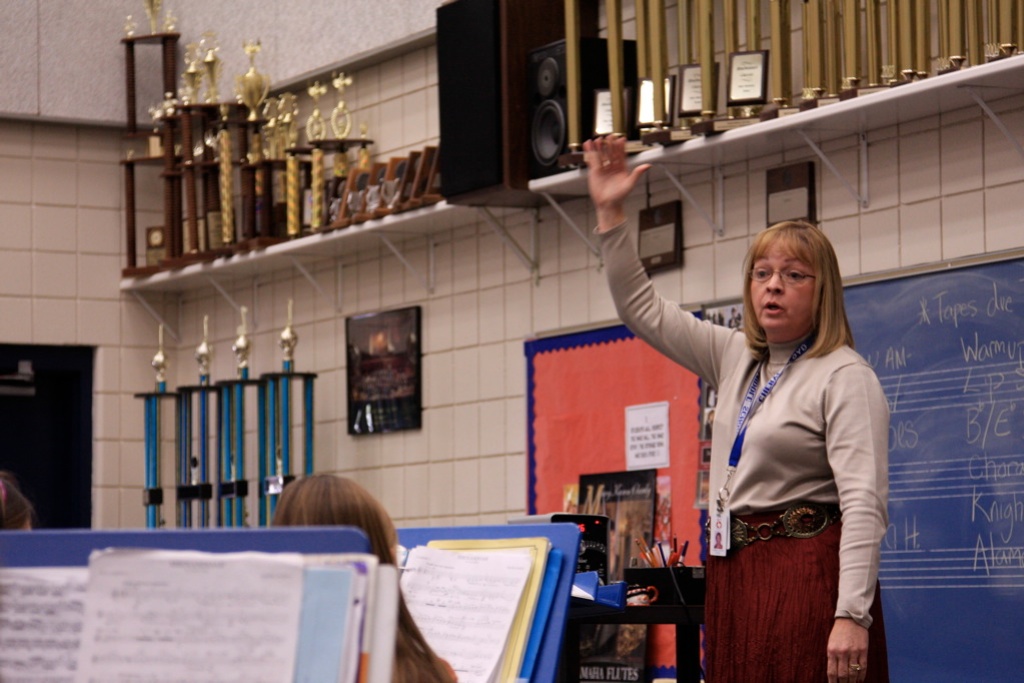
When I told my mother the other day that I was writing a piece for a young band, her response was, “wow, that sounds hard.” No kidding. There’s some definite crap music out there for “grade 3” as it’s called (on a scale of 1-5, with 5, or sometimes 6, being the most difficult technically), and it’s not so hard to write crap music for any age. Writing something worth playing and worth listening to, when, as a composer, you can’t depend on your usual bag of technical tricks, is really challenging. This makes me really admire what the great composers for young band — people like Frank Ticheli come to mind — are able to do.
In reality, I’m not writing a middle school piece. Although Cheryl Floyd’s band is, on paper, a middle school band, they are among the best middle school bands in the country. This is really like writing a piece for a mid-level high school band. Still, there are challenges.
I’m learning a lot about what young musicians can and can’t do, mostly by asking them to do it, then showing the score to somebody who knows how these things work and hearing them tell me, “that’s not even close to possible.” Granted, these suggestions have come not from Cheryl — who can teach her band to do anything I’d ask — but from other directors. I listen to the advice, though, because I don’t even know what’s awkward. I may have written something that’s possible but will take hours of practice, when I could change one note and make it sound basically the same but be less frustrating to learn. What kind of mistakes have I made so far?
I wrote low A’s for baritone sax. Professional bari saxes have a low A on them, but it’s an extension, and it’s not on every instrument — particularly not base-level saxes that would be played by a middle school student. Even if their instrument had the note, it would be the lowest note on the instrument, and the bottom few notes of the sax are problematic, particularly if you want any kind of dynamic control.
I wrote grace notes in the piccolo with pitches that are overly-awkward. I just want a flourish up to a high note, and the pitches I picked were just plain bad. (I wrote G, Ab, Bb, and ending on a C. Much less awkward — and indistinguishable at this speed — is G, A-natural, Bb, C.) As some have told me, this could all be moot, as many middle school bands won’t even have a piccolo player. Cheryl’s band has a great piccolo player.
I wrote high Eb (above the staff), marked mezzo-piano, for the alto sax. As I was told (by a college director, no less), “if you ask most sax players to play the Eb above the staff on the alto sax, you can just ignore your dynamic. If that note comes out at all, it will not be in tune — and it will be louder than anything else happening in the entire band.” So, I shifted the octave.
It was pretty easy to come up with a tune for the piece once I had the rhythmic idea. (The whole piece is in 7/8 alternating with 4/4. It looks tricky on paper, but the subdivision of the 7/8 is always the same — 2+2+3 — so the rhythm is very singable, making it very teachable.) The huge challenge of writing for this level has been the scoring. Because some bands won’t have all instruments — and even if they have somebody holding a given instrument doesn’t necessarily mean you’d want to hear the sound they’d get out of it, and that applies even through college, I’ve found — there aren’t constant solos everywhere. Still, there are a few exceptions. I did write a clarinet solo and a flute solo, but those are safe in almost any band once you reach high school. Since the Hill Country band is so good, I’m going to have a few other solos, too (the oboe part is pretty crucial — not normal for a middle school, to be sure, and I have a section that’s for vibraphone alone — fast and exposed), but the piece can’t be entirely soloistic.
Scoring for young band is a puzzle simply because everything that happens really needs to happen with two different players playing it at the same time, just so it’s covered. Whereas I usually try to approach scoring with some sort of part transparency — lots of color shifts as scoring changes from a flute run to a sax run to a clarinet run, for example — you can’t quite do that with young band, at least not without a little more attention to detail. Without some part transparency, band music starts to sound very “bandy,” so it needs to have some non-tutti work. Want a bass line in the bassoon? It’s a good idea to double it somewhere else, like the bari sax and/or the bass clarinet. (Really, I’d do that anyway. Just look at the ostinato in Redline Tango.) Want a melody in the alto sax alone? It might not be a bad idea to at least cue it elsewhere. (“Cuing” a part means putting it, as an option, in another instrument. That way, if there’s a solo in an instrument like the bassoon and the director doesn’t have a bassoonist or doesn’t think their bassoonist can play that solo, the director can ask the other instrument where it’s cued to play the solo instead.) With this piece, there will be a lot of cues, since the Hill Country group can play the original, but other bands in the future might not be so lucky. So there’s this tricky puzzle of “here’s what I want, ideally, and Hill Country can play it,” with a little bit of “and I’ll cue that here, in case any other band ever wants to try the piece.”
The other challenge, and one where I’m not worrying too much about what I’m writing because Cheryl’s players are so good, is in the percussion writing. I usually write very difficult percussion parts. Most middle school band music gives the percussionists little of interest to do, so I decided to give the percussionists a lot to do. In this piece, they’re playing almost constantly — all six of the players. The mallet parts (there are two of them so far) are very challenging. The parts in this piece can be played with two mallets (one in each hand), but Cheryl’s percussionists can play with four mallets, so I’m not terribly concerned about her players playing this piece. Still, it’s tricky to make sure I don’t go completely overboard. I’m hoping that the percussionists will really like the piece. I’m even giving them a drum break section because they’re so good.
So that’s what’s been keeping me busy. I need to finish the piece by Wednesday, as I’m going to Reno on Thursday to hear the incredible Timothy McAllister perform my soprano sax concerto at a regional CBDNA convention. That will be an exciting trip, but I can’t think about that yet. Right now, I need to finish the piece for Hill Country Middle School — and make sure I don’t let these guys down.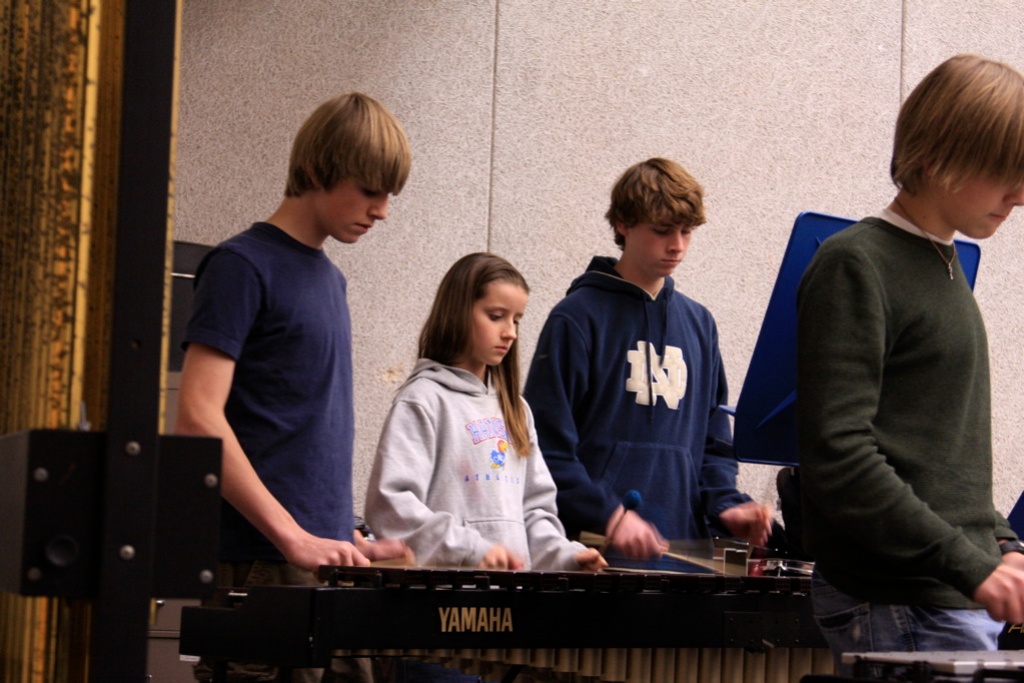
March 9, 2008
Sickly Honeymoon
AEJ and I went to Tokyo in January for our honeymoon. We started feeling sick while we were packing for the trip, and our health went downhill from there. Still, we managed to do some fun things while we were in Tokyo — not even half of what we planned, but at least that makes for somewhat more manageable blogging. Still, we left with over 1600 pictures. Click any of the photos below to see a larger version. And get comfy, ’cause this is a big one. (Oh, the number of times I’ve had to say that. ZING!)
We stayed at the Mitsui Garden Hotel, the same hotel we stayed in last March when we first visited Japan for the “Kingfishers Catch Fire” premiere. (Thank you, 10mm lens.)
The hotel is in the Ginza district. It’s a little like 5th Avenue in Manhattan, only it’s cleaner, smells better, and is almost eerily quiet considering how crowded it is.
One morning, when AEJ was too sick to get out of bed, I went for a walk, searching for coffee. I eventually found a Starbucks, but if I hadn’t there would have been plenty of beverage vending options.
Here’s an alleyway, spotless, and filled only with motorcycles. Great for a “fast ride on a short machine.” (That, sadly, is also what the ladies called me in high school.)
The Ginza Apple Store was only a 10-minute walk from the hotel. Per what you’d expect from Apple, it was a pretty slick looking place. The clouds are a nice touch. (Again, thank you 10mm.)
I spent a good deal of time walking around the various department stores in the neighborhood.
The lower floors have endless food options…
… each more colorful than the last.
There really is just about any food you could want, whether it be a taste for sweets…
… or meat.
The people in Ginza were fashionable…
… but they couldn’t compete with the clothes in the Harajuku district.
Harajuku is where you go to see the fashion of five years from now — which, apparently, is when we’ll all be dressed like Nintendo characters. (Moms not included.)
AFAIC, UR a CWOT. HHOJ. SC!
Japan has a thing for pandas.
You could get toy baby pandas…
… and panda games (as well as fun plastic lobsters, great for collecting, sharing and trading!).
Best of all? A frying pan-da!
There was an amazing toy store two blocks from our hotel. Outside, they displayed the new “I Love Chips” collection of toys. In America, this would be potato chips, or my personal preference, Doritos. In Japan, the chips they’re referring to are computer chips. This difference, in a nutshell, is why Americans are morbidly obese, and Japanese are designing the Wii.
Speaking of the Wii and the obese, this toy store had a huge selection of Wii and Nintendo DS games — including the yet-to-be-released-in-the-US game, Wii Fit. I would have bought it, but it would have been in Japanese, meaning I’d have to have Wataru come over to translate every time I wanted to play.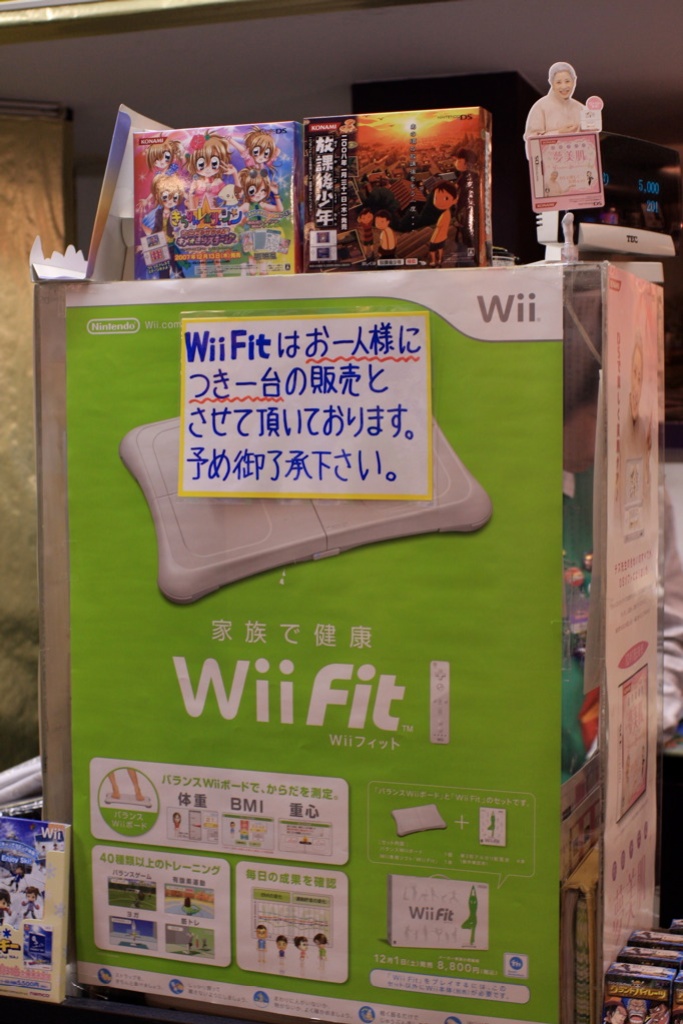
Remember Monchhichi? If you’re my age, you do. Damn it — now I have that damn Monchhichi song in my head.
Another popular motif in Japanese toys: stuffed animals that watch you.
I mean, they won’t stop staring at me, with their adorable little eyes.
They’re still watching me. Am I just being paranoid?
Please. Please stop.
Okay, now, this one doesn’t seem right.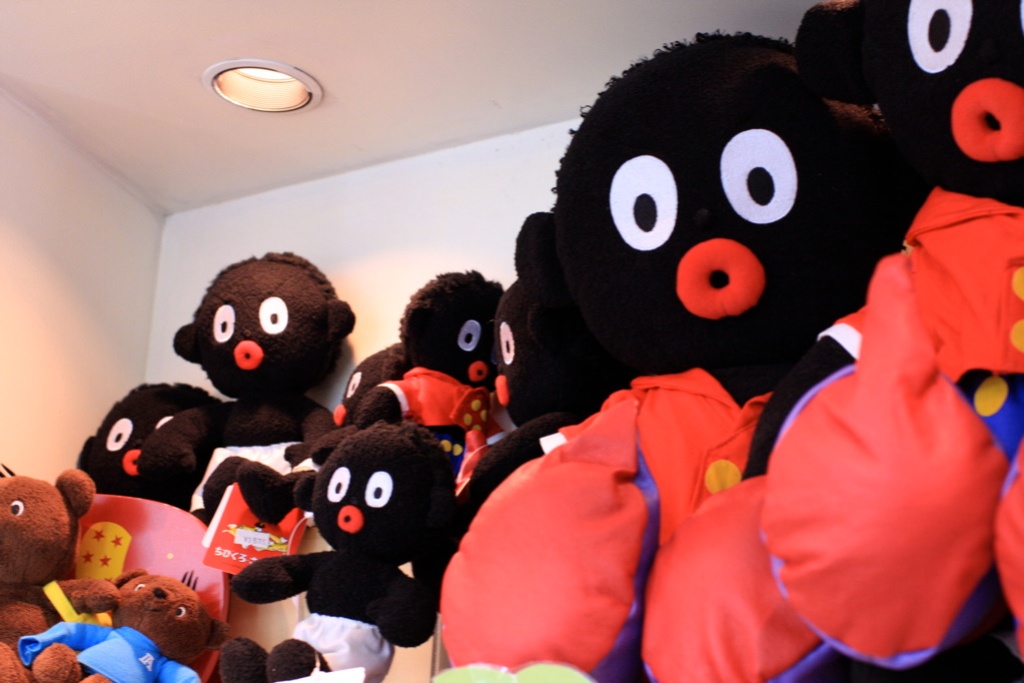
After looking at so many toys, it was time for some smorking. Oh, damn. I guess we have to go elsewhere.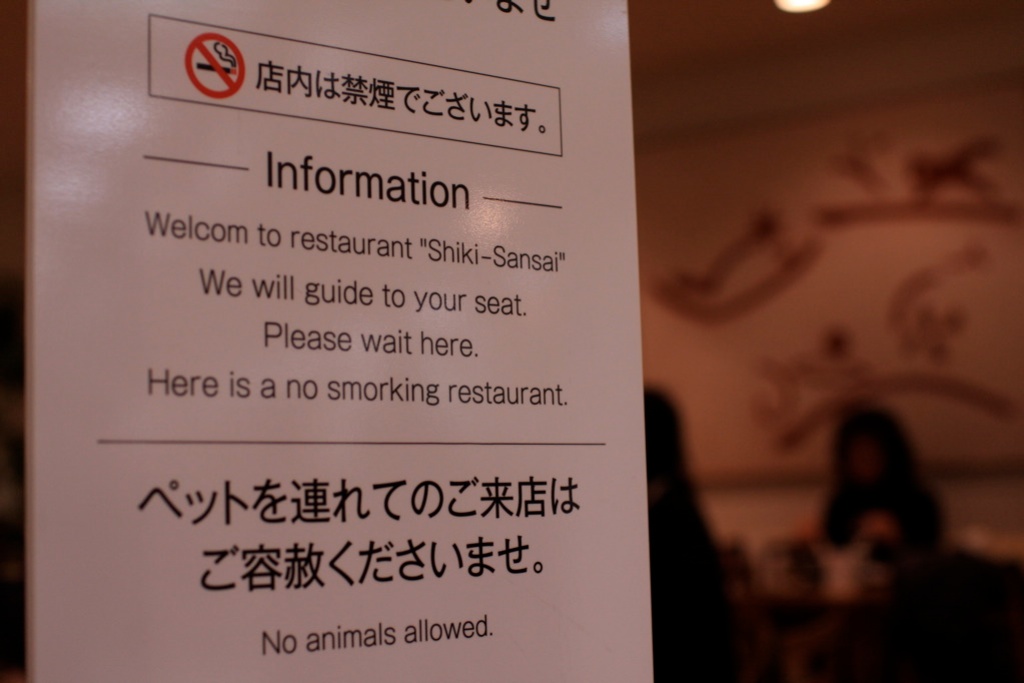
Our last big activity was attending the huge sumo wrestling tournament.
Thanks to Wataru, we had our own box seat.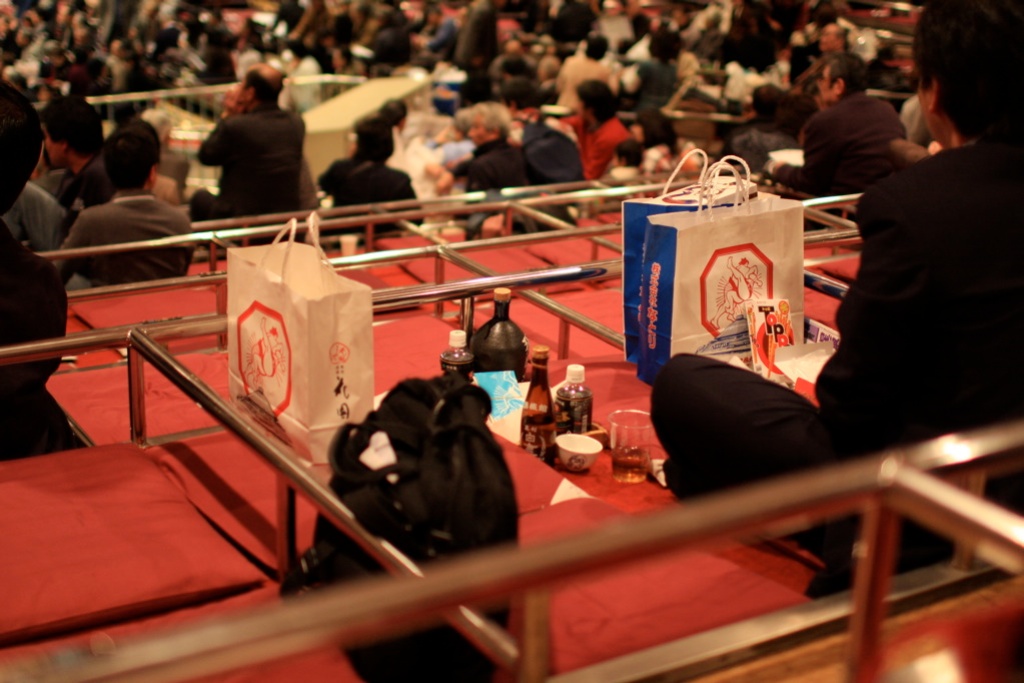
These boys were huge.
Each new class of wrestlers was introduced before their set of matches. During their introduction, they wear incredibly fancy garments — some of which made them seem a little less tough than they really were.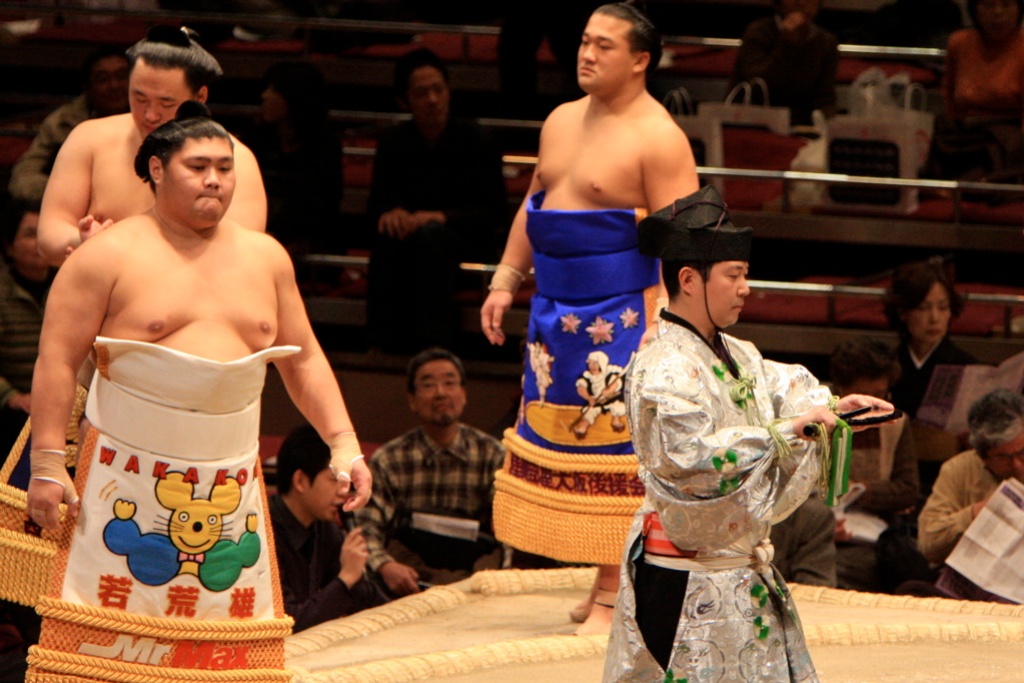
The matches were incredibly physical, with slapping…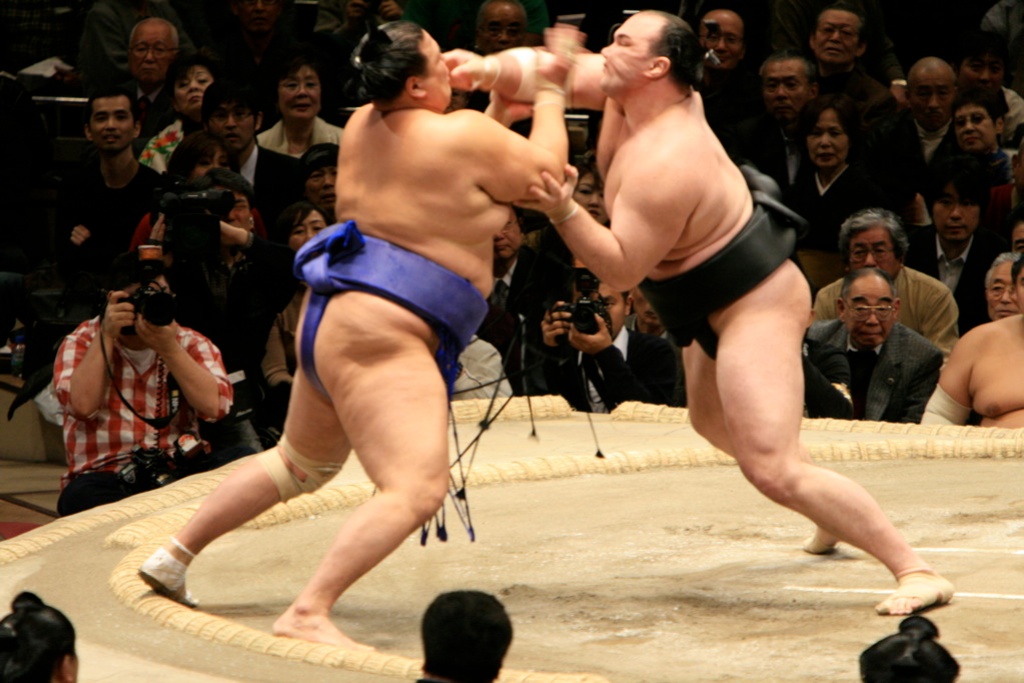
… and strangling.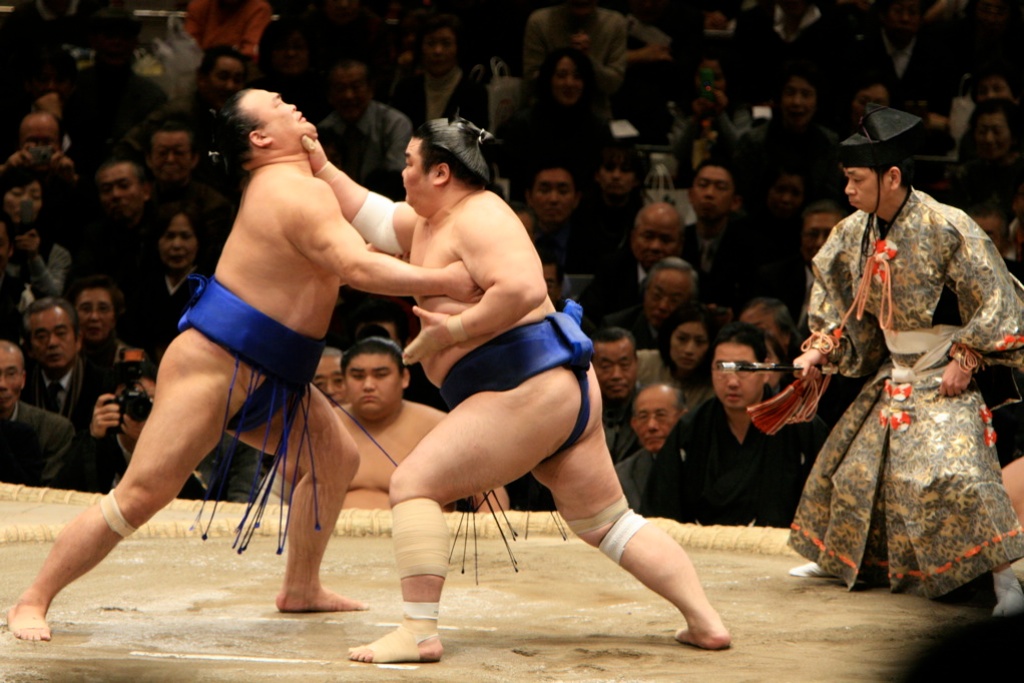
It was awesome.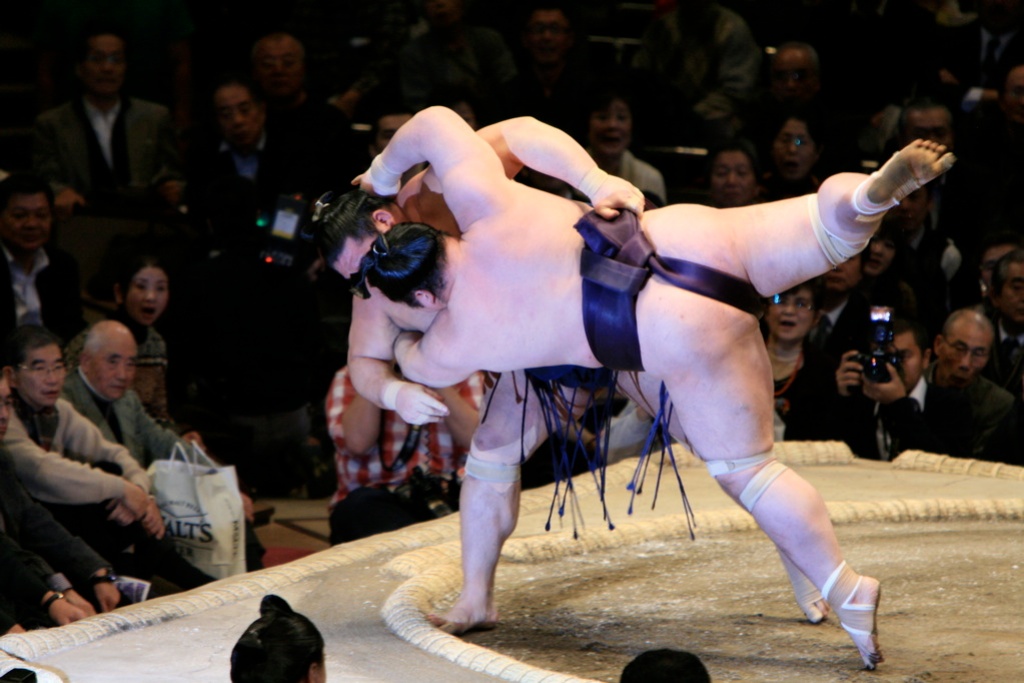
Even with our miserable sickness, it was a nice trip to Japan. Hopefully we’ll be healthy when we go back again. Japan is great — good food, nice people, crazy fashion… and cute toys with huge eyes. Kitty!
View Comments
Comments
This is good - now I'll be able to recognize the hotel! I'm sure much of my wanderings around that neighborhood will be "ASoMB" (As Seen on Mackey's Blog)...
I'm glad you had a good time and wasn't laid up in bed, sick the entire trip. It's neat to see pictures other people take of places I've been and think, "I've stood on that corner, too!".
~C
yup. the stuffed animals will follow you home.
Add comment
March 6, 2008
UGA and Kansas City
I spent last week on the road, flying back and forth between the University of Georgia in Athens and the University of Missouri in Kansas City. UGA was performing and recording “Kingfishers Catch Fire.” UMKC was hosting a regional College Band Directors National Association where the University of Oklahoma was performing my new piece, “Clocking.”
I flew to Georgia first. To get to UGA, one flies to Atlanta and then drives 90 minutes to Athens. Along the way, you pass this. Where would Jesus buy a truck? I always ask myself that: WWJBaT. Now I know. Praisallujah!
I had flown out, not just for the recording session, but for a concert that UGA was billing as the “neXt Festival.” I was a guest for the concert, as was composer Kristin Kuster.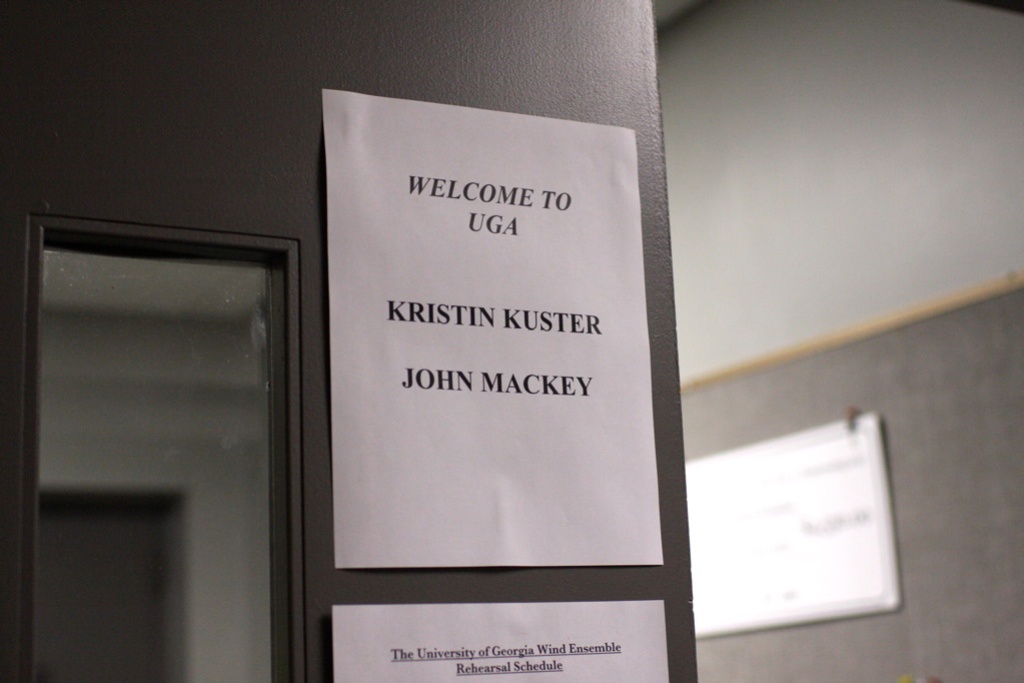
Kristy and I flew in on Sunday evening, and on Monday morning, we had rehearsal with the UGA Wind Ensemble, conducted by John Lynch. First, though, the grad assistants treated me to breakfast.
Rehearsal on “Kingfishers” was great. The band was also performing a premiere by Jonathan Newman, “My Hands are a City,” a piece for wind ensemble that incorporates electric guitar into the ensemble.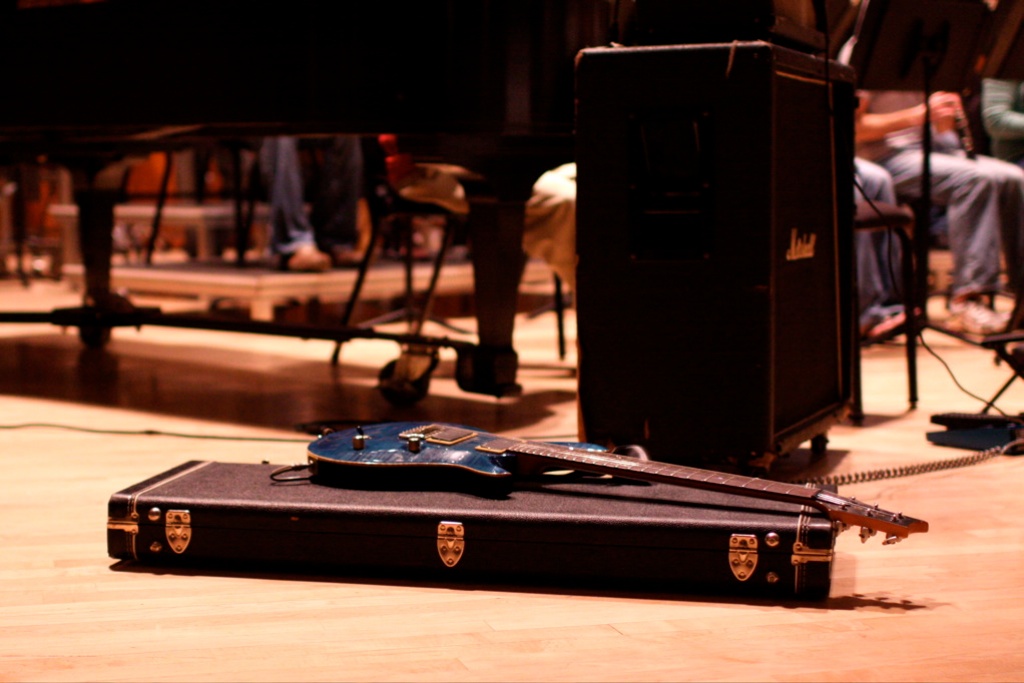
Most people paid attention during rehearsal, but some people played with their iPhones. How is it that every conducting grad assistant at UGA has an iPhone? Athens is too hip.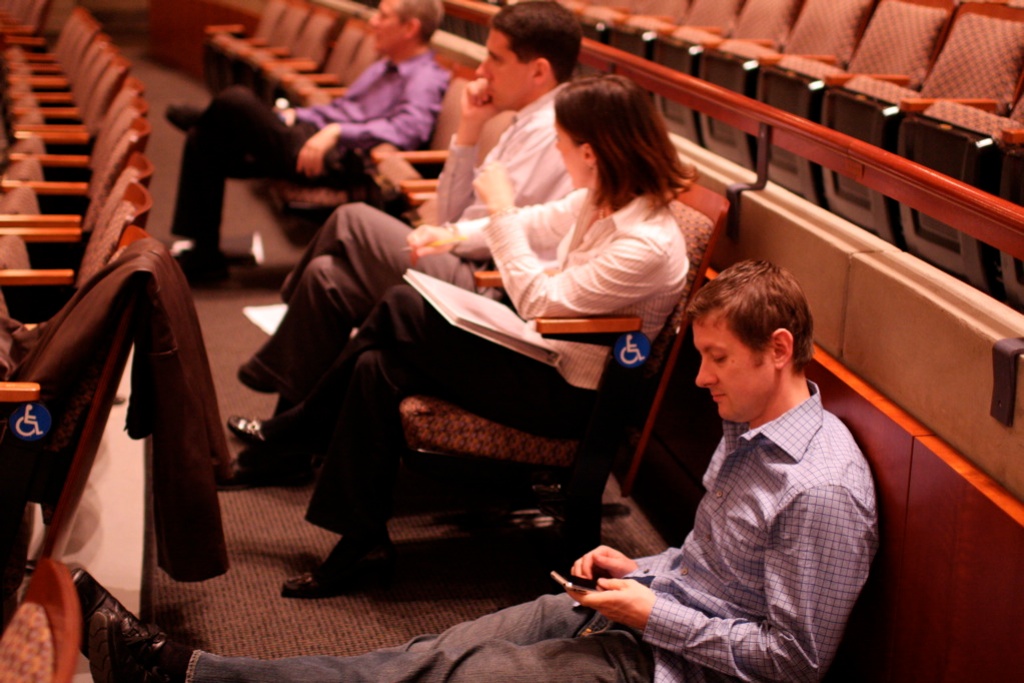
After rehearsal, John Lynch took me and Kristy out for lunch and a tour of campus. After visiting briefly with Our Lady of the Clam Shell…
… we saw the UGA mascot. The plaque reads “We Let the Dawgs Out.” Yes, they went there, which is fine — partially because the plaque is clearly dated, and partially because these words weren’t spoken by a failed presidential candidate.
The UGA campus has pretty trees.
Later that night, Lynch rehearsed our pieces once again.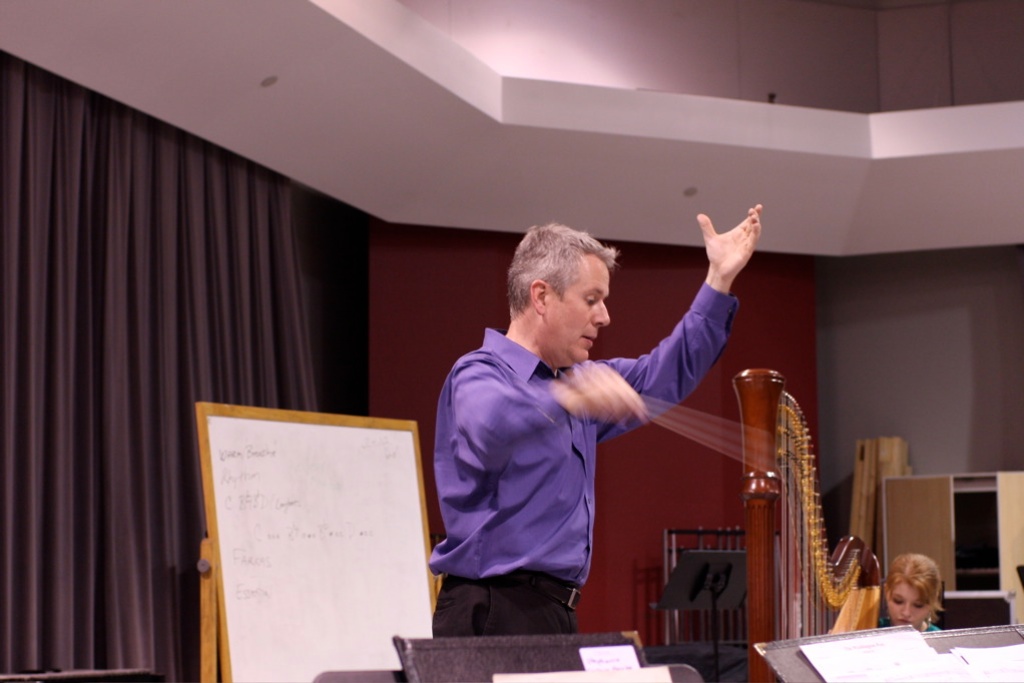
It was a good time.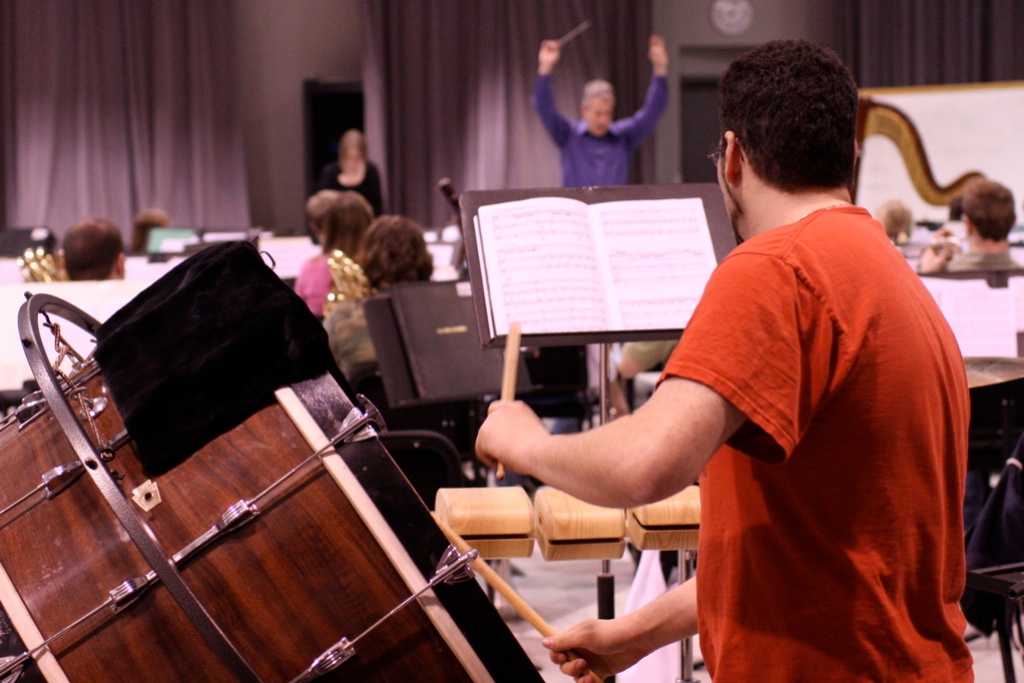
On Tuesday afternoon, we went out for delicious pizza — and these homemade pretzels made of pizza dough. Mmm…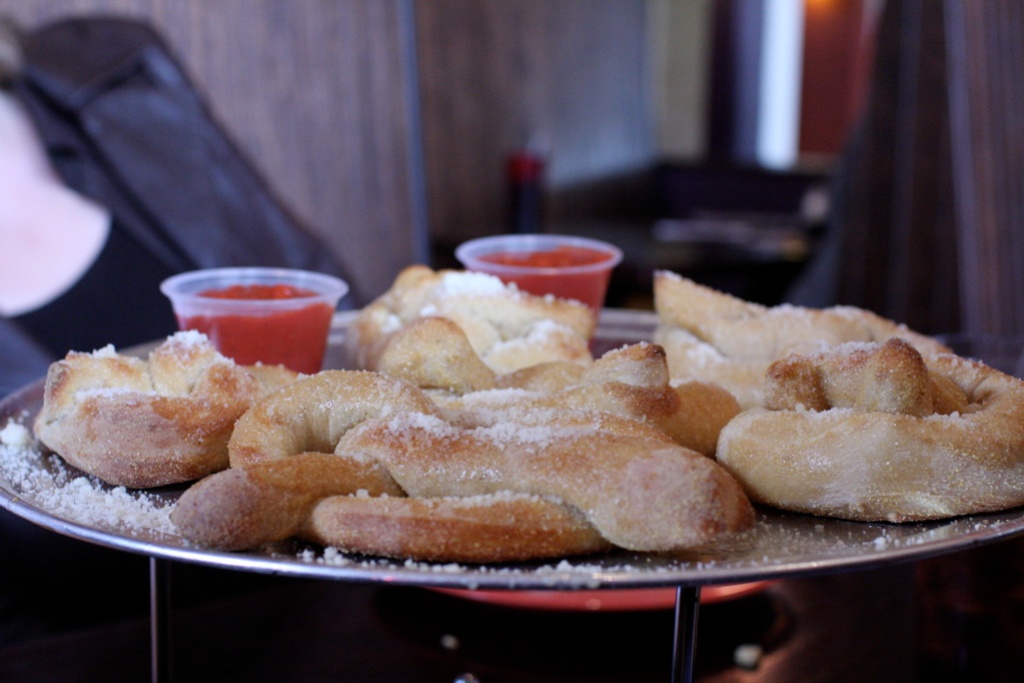
The performance that night was great, and bright and early the next morning, I flew to Kansas City. Wednesday night was a fun and delicious BBQ dinner — and dessert was a huge pizza-size personal carrot cake, served hot with melted cream cheese icing.
Certainly there’s a joke that begins, “how many band directors does it take to check an email?”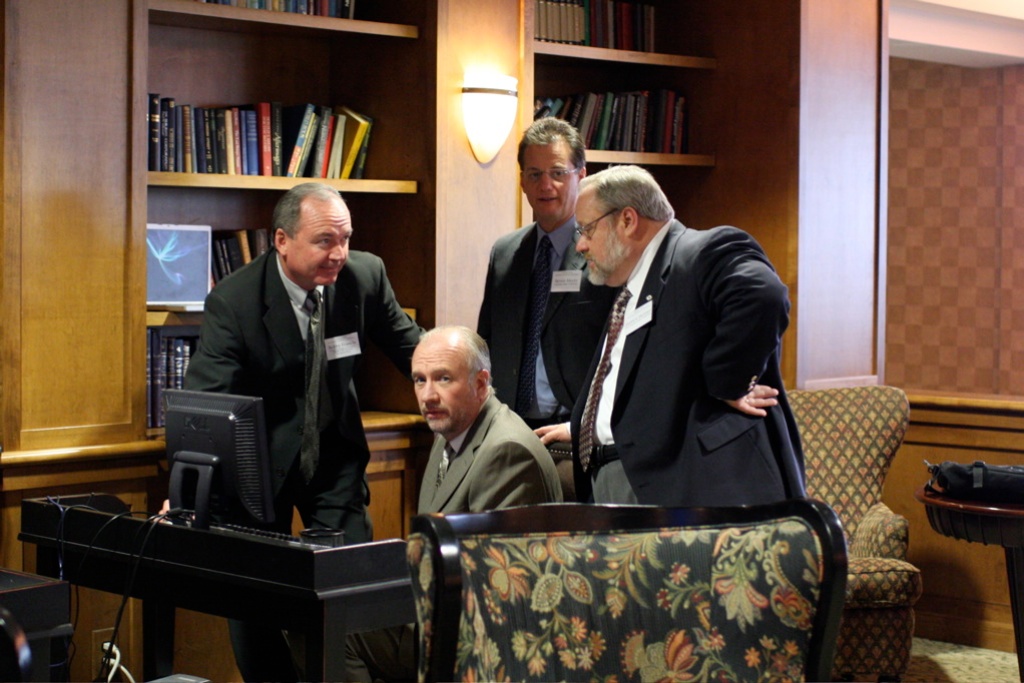
The CBDNA convention in Kansas City was being hosted by UMKC, but the hotel was about 2 miles from the hall. Fortunately, we were shuttled in a big yellow school bus. It could have been awesome, except that was like a school bus going to an all boys school, which made it decidedly more lame.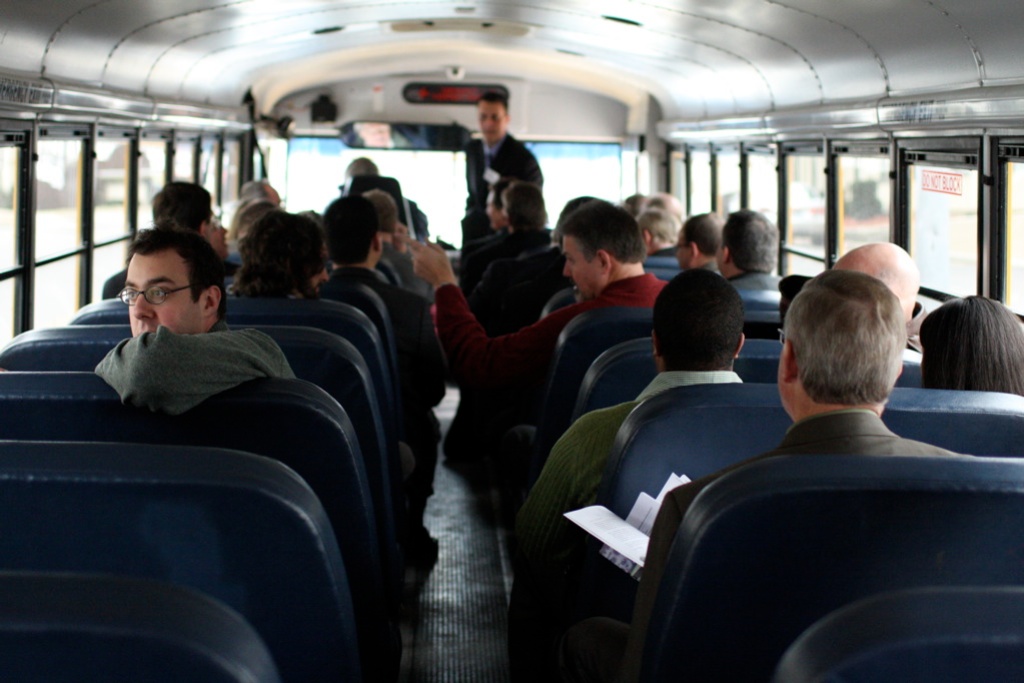
On campus, Newman rehearsed with the Texas A&M Commerce band, conducted by Jeff Gershman. They were also premiering that same new piece that UGA was performing — “My Hands are a City.” Here, Newman looks a bit concerned. (He was being a little hard on himself; the piece is great.)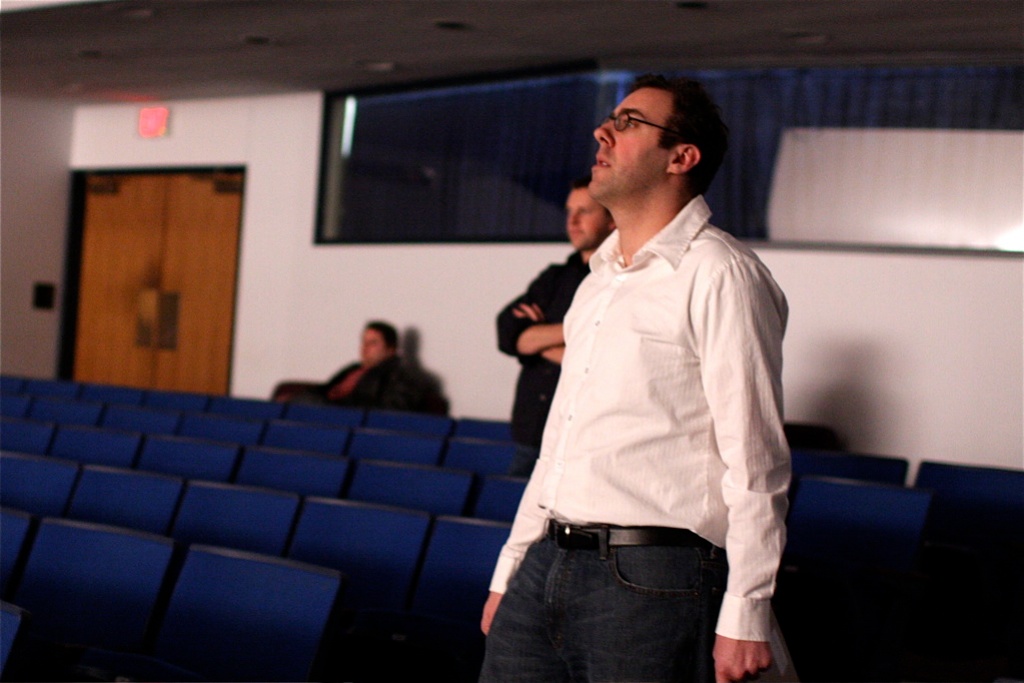
I mean, there’s nothing to worry about with Gershman on the podium. This guy is fantastic, as I’ve said before.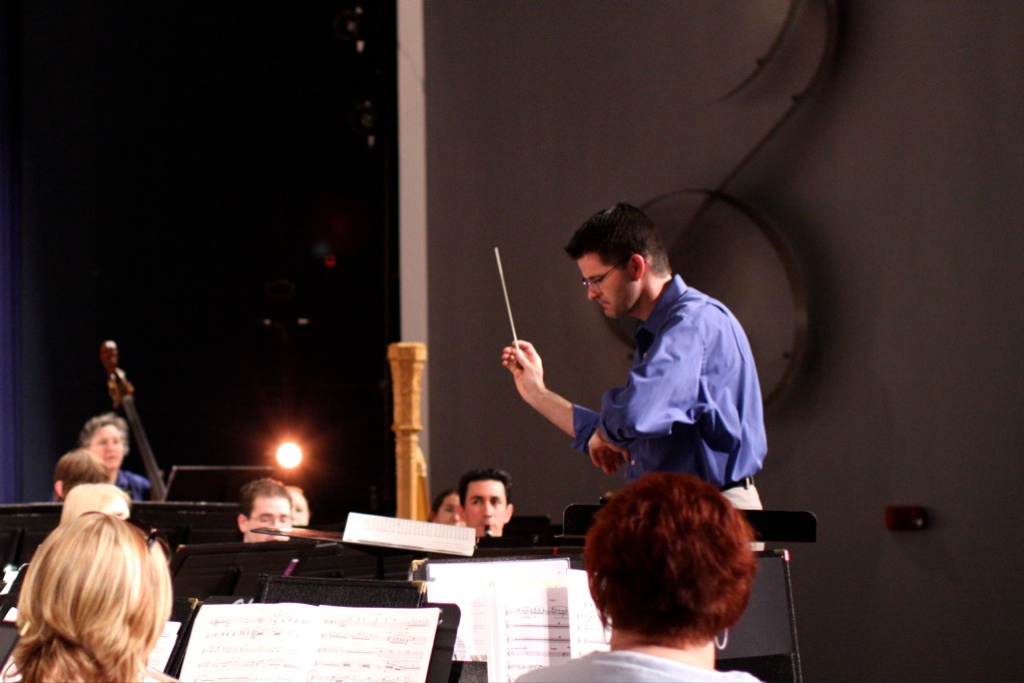
After rehearsal: lunch at the Cheesecake Factory, where I had mini-burgers. Yum.
William Wakefield did a beautiful job with my new piece, “Clocking.” (There will be a recording soon.) The band also performed Carter Pann’s “Four Factories” (wow — as Newman said after, Carter is “put your head in an oven” good) and Newman’s gorgeous piece, “As the Scent of Spring Rain.” (Newman had three pieces during the convention. Show off.)
On Saturday morning, I flew back to Atlanta. (I have to say — American Airlines does not make it easy to get between Atlanta and Kansas City. It can’t be that far, really, but when you add in the drive time to Athens, it’s a 10-hour trip.) Saturday night: dinner and drinks. Sunday morning: the recording session for “Kingfishers Catch Fire.”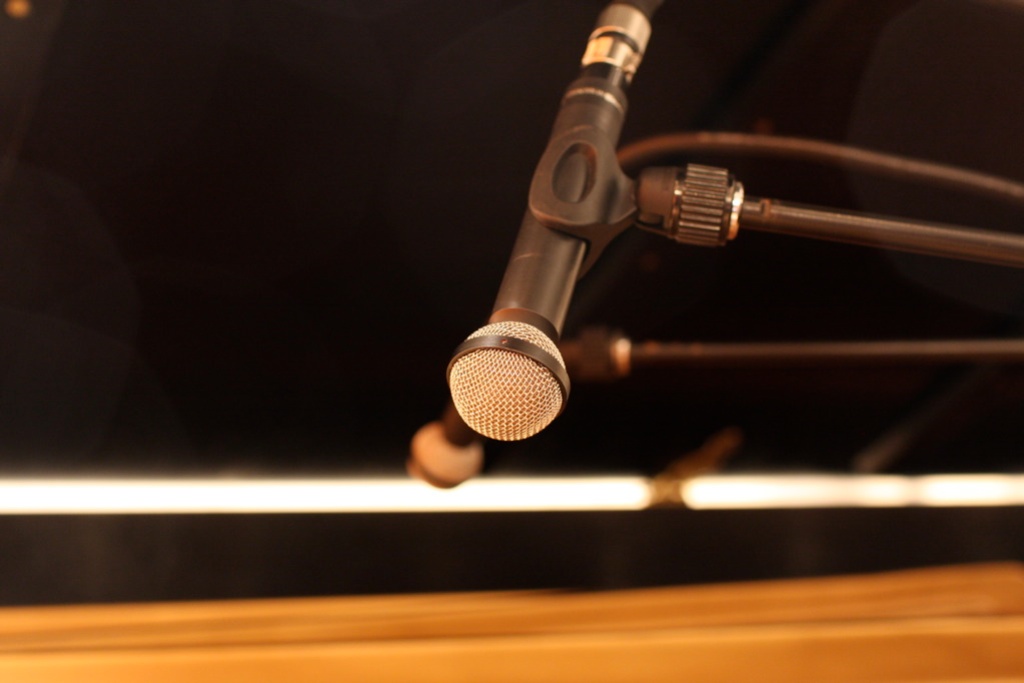
Bruce Leek, the recording engineer, brings little toys — one from each school he has recorded — and sets them up on the equipment.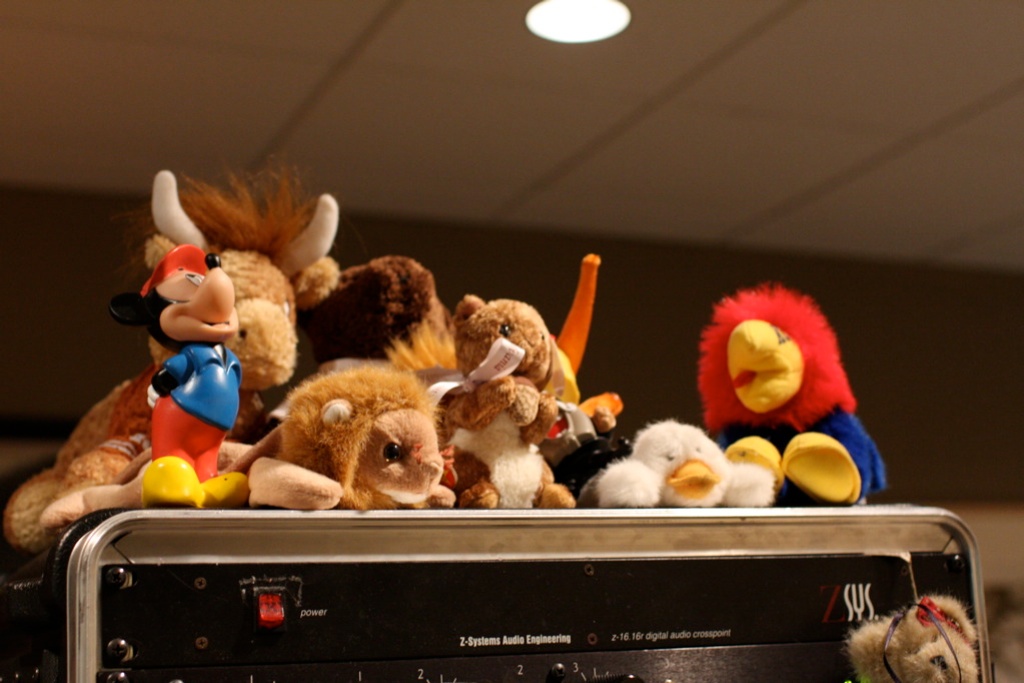
The session was fun — and hard. Everybody has to play everything perfectly at least once (at the same time) during a session, and this meant a huge amount of work on the part of John Lynch and his players. It also meant incredibly intense listening for hours on end.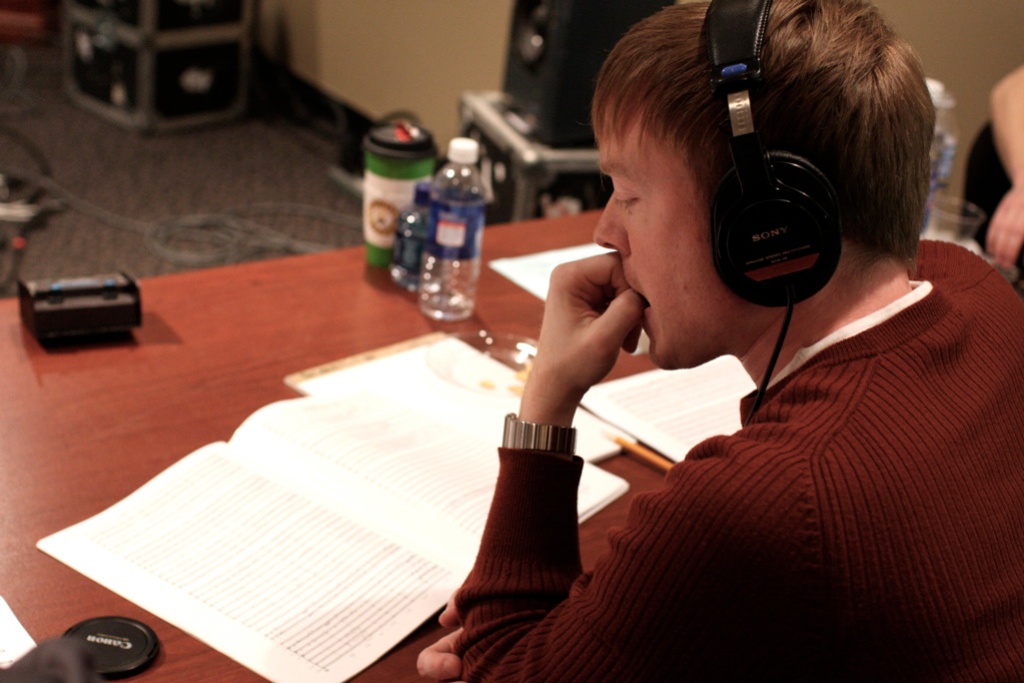
The recording is going to be great. (I think Andy is holding his nose in this picture because of my piece, not because of the sound quality.)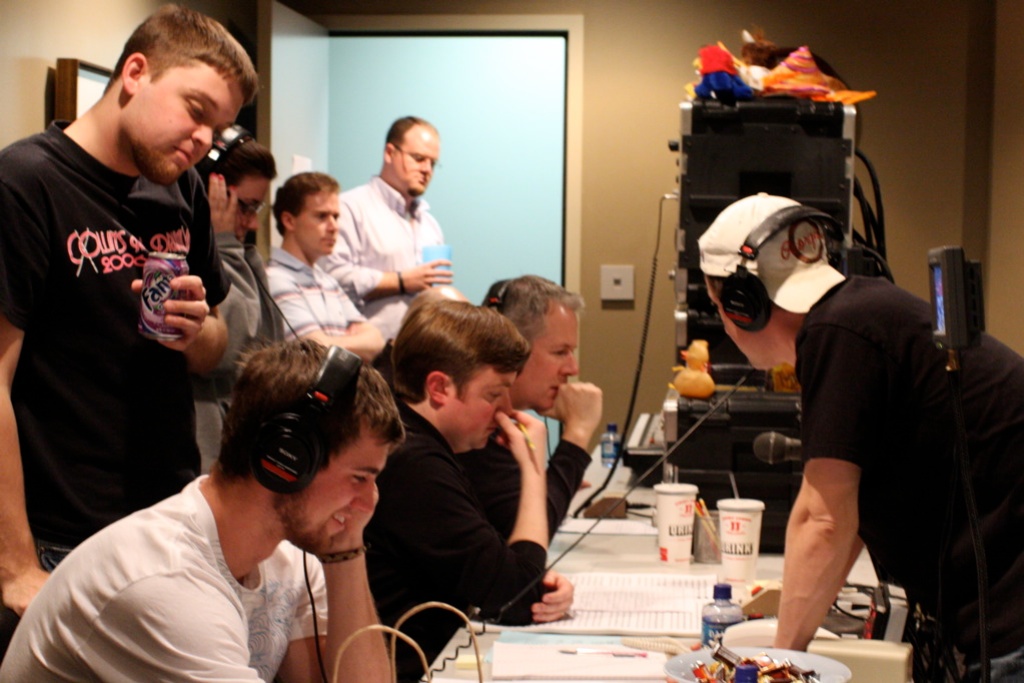
The band also recorded Newman’s piece, as well as Kristy’s new piece, “Lost Gulch Lookout.”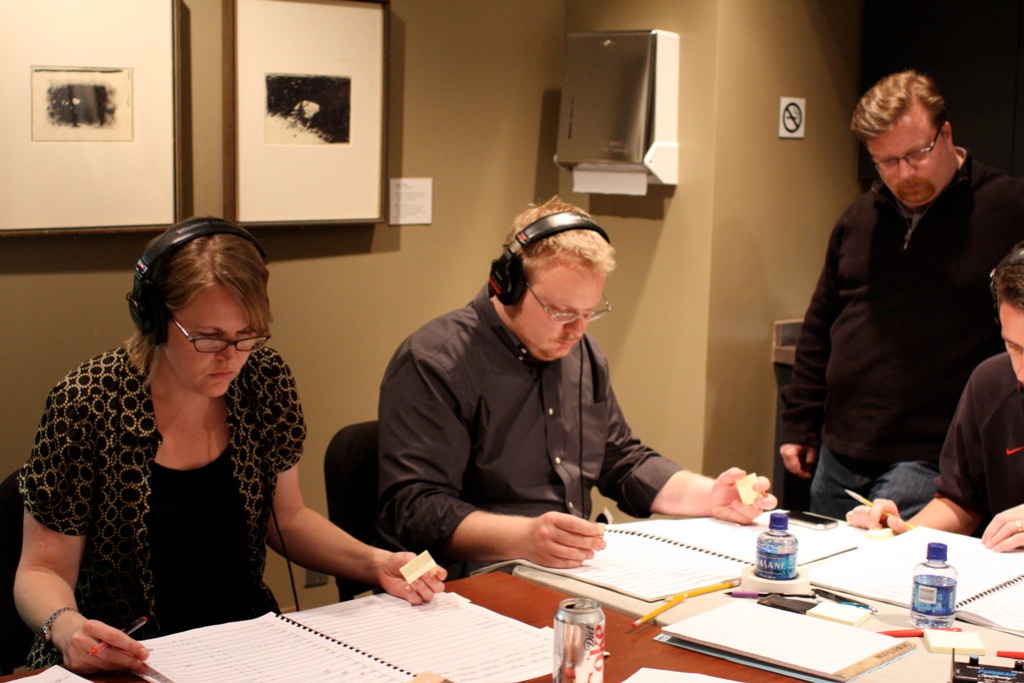
I’m really excited about the CD. The recording engineer for the session was Bruce Leek, one of the best engineers in the business. His recordings have an immediately identifiable sound — and it’s a great sound. Bruce recorded both the Naxos recording of “Redline Tango,” as well as the Air Force Band of Mid-America’s CD of “Sasparilla” (available free on my site.) He’s an engineering bad-ass. His recordings are crystal clear with amazing dynamic and frequency range (he records a bass drum like nobody else). There are other guys who record wind band, but they pale in comparison to Leek. You want a band CD that sounds like a professional recording, rather than something recorded in a gym? Get Bruce Leek.
Thank you to John Lynch, the UGA band, and all of the grad assistants for everything you did last week. And a great big thank you to the engineering master, Bruce Leek!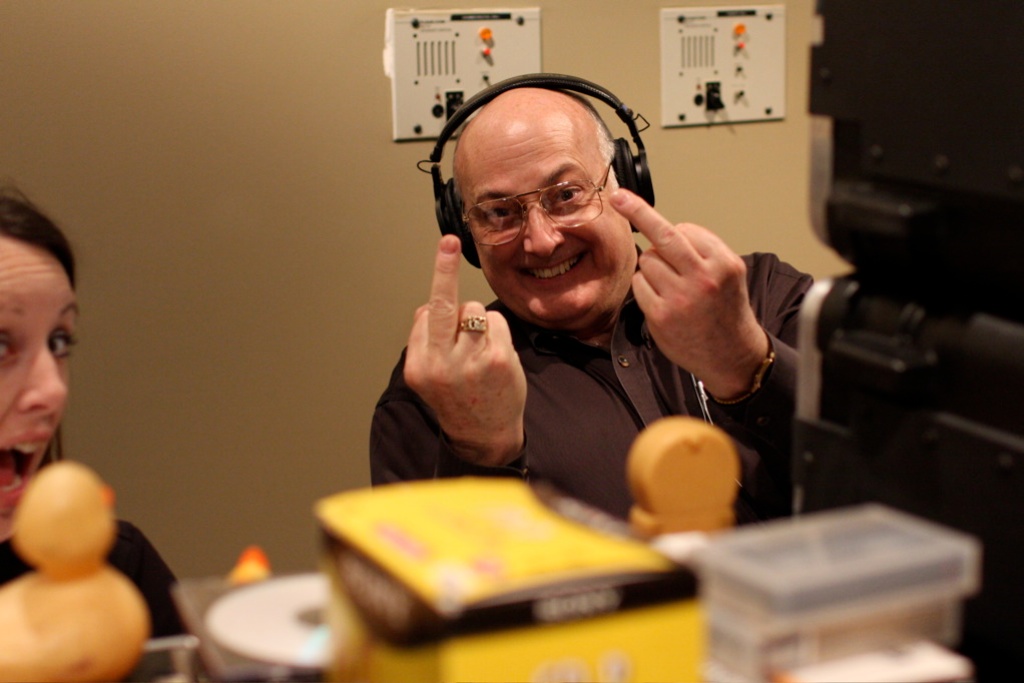
View Comments
Comments
Your Bruce Leek picture = BEST... PICTURE.... EVER!!!
YES!! That last picture rules!!
And oh Chester... on that damn phone.
Praisallujah!
(A different Steve from Austin)
glad to know chester was paying attention when i was on the podium... must've been compelling. :)
I like to think of that "Jesus" sign read the way you say it when you've got your face buried in your hand. "Jesus..."
Charming to the last...
At Long Last, i've gotten to see a photo of, bruce leek... as one listener, for many years, to, bruce's sessions, w/ several usaf bands, i've always considered him to be, " the u. s. air force' ", secret weapon.. next to my early, mercury lp's, his engineering and mastering products, are most revered in my extensive, usaf-band-program,collection, going back into the 80's... thank you very much for this opportunity to thank, a true, Master of his craft... my unusual hobby of visiting, schools and libraries, w/ "Service Band" ( all-5-branches ) info; ( begun in april ' 94 ) currently totals; 191 libraries; 273 high schools, and, 175 middle & elementary schools, all over, new-england... a true labor of Love, though- nowadays, as of, April 24 2006, w/o my lovely, wife, Mary, as my driving and dining companion... truly, music has helped me cope !!!! our children will one-day have these great releases to deal with.. thank you so very much, vty, joe damery, of; bedford, mass.
View Comments
Comments
Cathy says
Hmmm...sounds like another Grade 3 piece that will be out of my band's abilities. Especially if you have 6 percussionists that play constantly. I'm lucky to be able to take 3 percussionists to contest each year! *snaps fingers* Bummer.
~C
Add comment